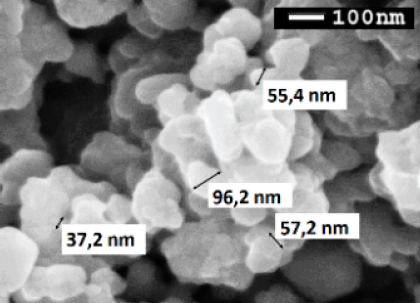Study of “Doctor Blade” Nano-CuO Photoelectrode for Perspective Water Splitting
Abstract
Solar fuels are indispensable for a 100% renewable energy future. Pursuing semiconductor photoelectrodes to obtain H2 using water-splitting photoelectrochemical cells is an important research topic today. Bandgaps as high as 1.9 eV have been reported for nano-CuO because of quantum effects; this favors its possible use for water photolysis. In this paper, nano-CuO films, fabricated using the simple “doctor blade” technique, are studied as photoelectrode in a two-electrode PEC cell for water photolysis. SEM analysis confirm the nanometric size of film grains and the photoelectrode porosity. The photocurrent behavior is studied, particularly, photocurrent transients for non-assisted and assisted water photolysis. Existing defects acting as carrier traps explain the different transient behaviors found. The existence of defects is explored using X-ray diffraction and the Williamson-Hall technique.


This work is licensed under a Creative Commons Attribution-NonCommercial 4.0 International License.
This work is licensed under the Creative Commons Attribution-NonCommercial 4.0 International (CC BY-NC 4.0) license.








